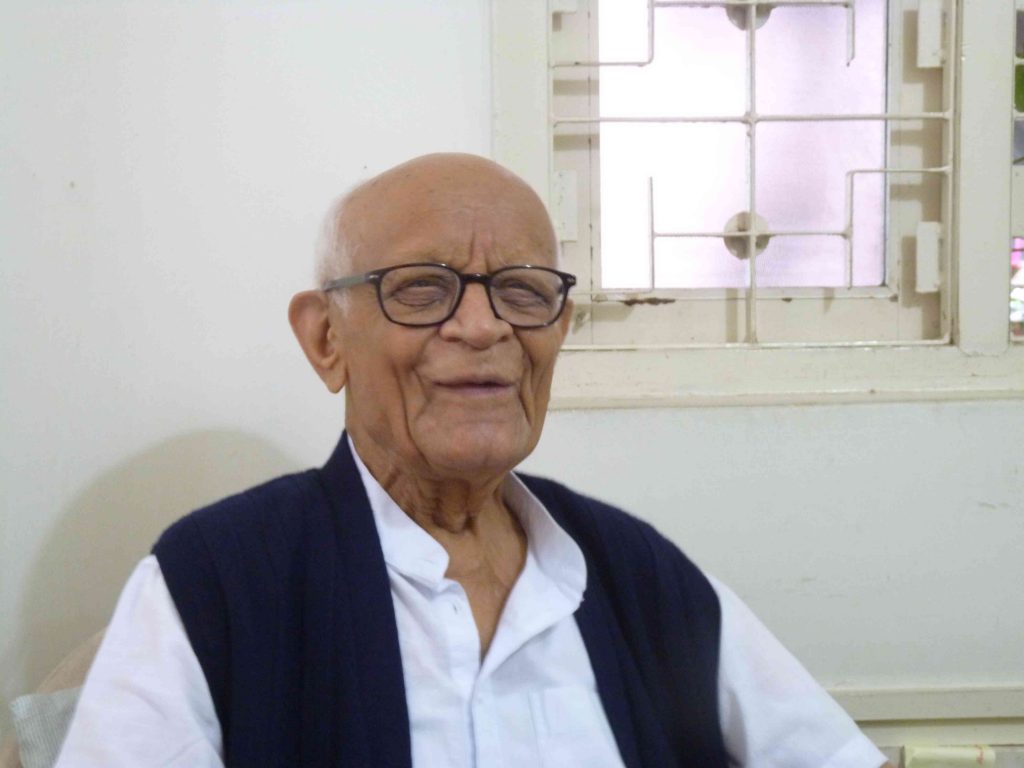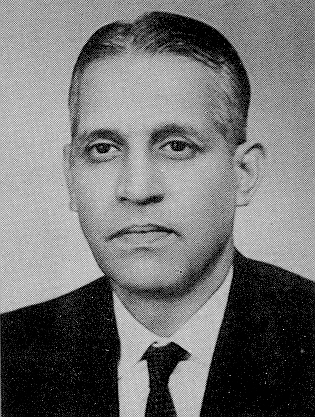
YC Subrahmanya studied metallurgy at IISc, during 1948-51. He was taught, among others, by Brahm Prakash, who was later an important member of India’s nuclear and space research programmes. Subrahmanya then joined the Ordnance Factories as an Assistant Works Manager and went on to have a long career, retiring as a Deputy Director-General. Now 93, he is engaged with the Bharath Gyan Vigyan Samithi, part of the people’s science movement in India. He spoke to Connect about how his time at IISc changed him in many ways. Excerpts from the interview.
When did you join the Institute and what did you study?
I joined the Institute in 1948 for the metallurgy course, a three-year course. We were awarded the DIISc, the diploma of IISc, equivalent to a bachelor’s degree. When I was doing the course, MS Thacker was the Director. He was the first engineer to be the Director of the Institute.
The 1947 batch was the first in the metallurgy course. I was in the second batch and there were only eight of us in it. This was after I did my honours in chemistry from Central College in Bangalore, in 1947-48. The first batch in metallurgy had a professor in this area, Prof Adcock, an Englishman. But by the time we arrived, Adcock had already left. And our department went without a head, a professor, for about one and a half years or more.
Who were your teachers?
There were two who were part of the department: One was EG Ramachandran – he passed away recently – and his field was physical metallurgy. Mr Balachandra was the other, and he taught electro-metallurgy. He was an electrical engineer. Apart from that, the ancillary subjects used to be looked after by people of other departments.

The department underwent a transformation when Prof Brahm Prakash joined as Professor and head of the department. I can claim that I’m a student of Brahm Prakash. [Laughs] Wonderful man, a great character. He joined in late 1950. He came here on a loan from the Atomic Energy Establishment, Trombay (later renamed the Bhabha Atomic Research Centre). Bhabha agreed to release him under the condition that after his stint at the Institute he would go back to Trombay. Ramachandran was assistant professor by then.
What subjects did Brahm Prakash and Ramachandran teach?
Ramachandran was a physical metallurgist, with a particular interest in phase transformations, heat-treatment, metal structure, metallography and such. Brahm Prakash was well-versed in all aspects of metallurgy and excelled in the principles of extractive metallurgy and process metallurgy – their chemistry, thermodynamics and physics. He did his PhD from the Punjab University and had a DSc from the Massachusetts Institute of Technology. He was a very friendly person but could also be very tough.
In the Institute, we did not address our teachers or professors as “sir”. That was a change from the pre-degree colleges. So we called Brahm Prakash “professor”, and Ramachandran “doctor”.
Do you have any memories of your personal interactions with Brahm Prakash?

I remember a great instance of Brahm Prakash’s attachment to and concern for students. The previous batch, when they passed out, had a get-together, and invited the professor, all the teachers and staff to the party. When we finished our course in 1951, we thought that we should also do the same, that it should become a tradition. So Prof Brahm Prakash and others joined our farewell party. When it was almost over, he said to us: “What is this? You are going out and are having a party for those people who are going to stay? It is you who should be given a party.”
“The department underwent a transformation when Prof Brahm Prakash joined as Professor and head of the department”
After the function was over, true to his word, he took us all out for a great evening. We watched a cinema in the MG Road (then South Parade) area and then we dined together. This is the person that Brahm Prakash was.
It is he who suggested to me to apply for the job at the Ordnance Factories. After I joined service, he used to send me New Year greetings without fail – and once, he sent me greetings from Tokyo while he was on a visit there!
Did your time at the Institute change you in any way?
I joined the Institute with a fair amount of keenness and interest in science from the college days. This was consolidated and taken to a higher level in the Institute and I continue to nurture it to this day.
Attitude and self-confidence were big gains. Still, I learnt to pause and ask: Are you right? This I believe makes self-confidence more assured. In the Institute, you grow, but then you are in the midst of so many evolved and endowed people, and you cannot but be humble. Could there be a greater gain than that?
Whether I gained anything in metallurgy or not, I don’t know [laughs], but I learnt tennis here. For one who has always been keenly interested in sports, tennis was a big gain. While here I could play a game like basketball, such team games are not possible at your workplace. I continued to play tennis right through the years at our workplaces – and win a few prizes and tournaments! Indeed, I was playing tennis till a few months ago.
If a student is really interested in doing something apart from what he learns in the classroom, even in terms of the subject, the Institute provided opportunities and it did make a difference in you. You learn as much as you want. And you weren’t in a class where your attendance was marked.
I should also add that, in 1950, I was awarded the Nuffield Foundation Vacation Scholarship in Metallurgy, and was a student trainee for three months in the Steel Works of Stewarts and Lloyds in Corby, UK.
Why did you choose to come to IISc for your studies?
It could have been so because the Institute is located in Bangalore, my hometown!
Many of us in the BSc Honours wanted to go to the Institute because we felt that our acquaintance with science needs to be deeper. From what we heard from our seniors who had gone to IISc, such as AR Vasudeva Murthy – we used to go visit him at the Institute – we were certain that if you are interested, this is where perhaps you will get to know something about science. I was not disappointed in that, as mentioned earlier.
It was known that the Institute was a place where openness was easy and so was communication. As a student applicant, I could personally meet the Acting Director, EV Ganapathi Iyer, in his office and talk to him about my admission.

Youngsters like me at that time grew up amidst the atmosphere of the World War II, an intra-imperialist war; there was the dominance of fascism in Europe; there was the Soviet Union; there was the civil war in Spain; there was the Long March and the Revolution in China; and then, there was our own freedom movement – many of us had participated in the Quit India movement of August 1942. All this could not but send messages of disquiet in young and inquisitive minds and raise uncomfortable questions. It was so with me as we were completing the honours degree. In a situation such as this, the Institute beckoned, with its mostly open environs and discussion. Equipped with science, however lacking in maturity it could be, one had a real opportunity to dwell on the issues with the aid of science and scientific methods and approaches in an institution like IISc.
No wonder then that we had a branch of the Association of Scientific Workers of India on campus. And the president of this association was none other than Satish Dhawan!
“We were certain that if you are interested, this [IISc] is where perhaps you will get to know something about science”
When you were at the Institute in 1951, the Indian Science Congress was held at IISc.
Yes, and Bhabha was the President of that Indian Science Congress. In our department itself, certain exhibitions and things like that were there. We were mostly doing some voluntary work at the event – looking after the exhibits, taking people around, attending the general assembly, helping the organisers. I remember that there was MS Subbulakshmi’s concert on one evening and Bharatanatyam by Maya Rao. It was something that we enjoyed. It was a sort of icing on our stay in the Institute.
Bhabha was an artist himself. I have seen Bhabha sketching on the back of an invitation card a troupe of nadaswaraa artists, with his left hand! It was at a wedding reception at Prof K Sreenivasan’s place where Bhabha was a guest.
After your retirement, you have been associated with the Bharath Gyan Vigyan Samithi (BGVS) for a number of years.
Yes, I’ve been associated with BGVS for over 15 years. They are a very committed set of people working with society to bring home to them the need to be aware of what science is with reference to the issues of society. Their aim and work is to inculcate in people, in general, the need to adopt methods of science in understanding and finding solutions to societal issues, develop a rational approach and have a scientific temper. Without following the methods that science follows, it is not really possible to find out what happens and why it happens, particularly when applied to society. Today, natural science people are not isolating themselves and are into these sorts of issues.
It is a desire in me that I should be associated with a group of people who have this approach to things – that their attainments in science is not the end of science. You should apply science elsewhere too, have a rational attitude and not be driven almost entirely by what is given to you. But our beliefs are so hardwired in us and so deep that people feel comfortable with that. This is something that has to necessarily change and BGVS works towards that.
All the state-level organisations like BGVS are brought together in the All-India People’s Science Network. Every three years they hold a people’s science congress; I had gone to one in Lucknow. These are things which keep alive my interest in this area of application of science.
At BGVS, we have regular monthly meetings where we discuss our programmes. My interest is not that I have something to give and that other people should benefit from that. No – I want to benefit myself.




